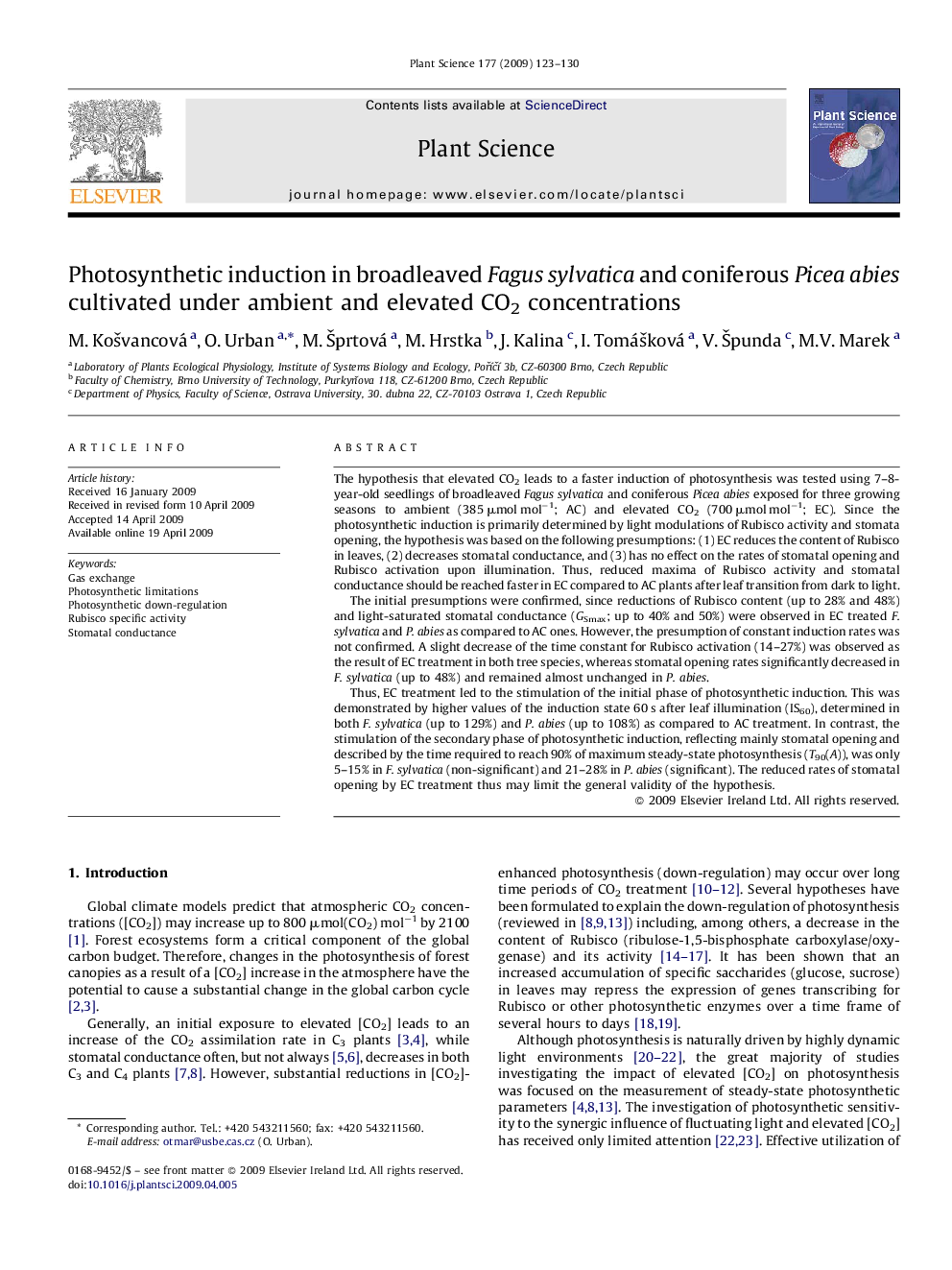| کد مقاله | کد نشریه | سال انتشار | مقاله انگلیسی | نسخه تمام متن |
|---|---|---|---|---|
| 2018127 | 1067836 | 2009 | 8 صفحه PDF | دانلود رایگان |

The hypothesis that elevated CO2 leads to a faster induction of photosynthesis was tested using 7–8-year-old seedlings of broadleaved Fagus sylvatica and coniferous Picea abies exposed for three growing seasons to ambient (385 μmol mol−1; AC) and elevated CO2 (700 μmol mol−1; EC). Since the photosynthetic induction is primarily determined by light modulations of Rubisco activity and stomata opening, the hypothesis was based on the following presumptions: (1) EC reduces the content of Rubisco in leaves, (2) decreases stomatal conductance, and (3) has no effect on the rates of stomatal opening and Rubisco activation upon illumination. Thus, reduced maxima of Rubisco activity and stomatal conductance should be reached faster in EC compared to AC plants after leaf transition from dark to light.The initial presumptions were confirmed, since reductions of Rubisco content (up to 28% and 48%) and light-saturated stomatal conductance (GSmax; up to 40% and 50%) were observed in EC treated F. sylvatica and P. abies as compared to AC ones. However, the presumption of constant induction rates was not confirmed. A slight decrease of the time constant for Rubisco activation (14–27%) was observed as the result of EC treatment in both tree species, whereas stomatal opening rates significantly decreased in F. sylvatica (up to 48%) and remained almost unchanged in P. abies.Thus, EC treatment led to the stimulation of the initial phase of photosynthetic induction. This was demonstrated by higher values of the induction state 60 s after leaf illumination (IS60), determined in both F. sylvatica (up to 129%) and P. abies (up to 108%) as compared to AC treatment. In contrast, the stimulation of the secondary phase of photosynthetic induction, reflecting mainly stomatal opening and described by the time required to reach 90% of maximum steady-state photosynthesis (T90(A)), was only 5–15% in F. sylvatica (non-significant) and 21–28% in P. abies (significant). The reduced rates of stomatal opening by EC treatment thus may limit the general validity of the hypothesis.
Journal: Plant Science - Volume 177, Issue 2, August 2009, Pages 123–130